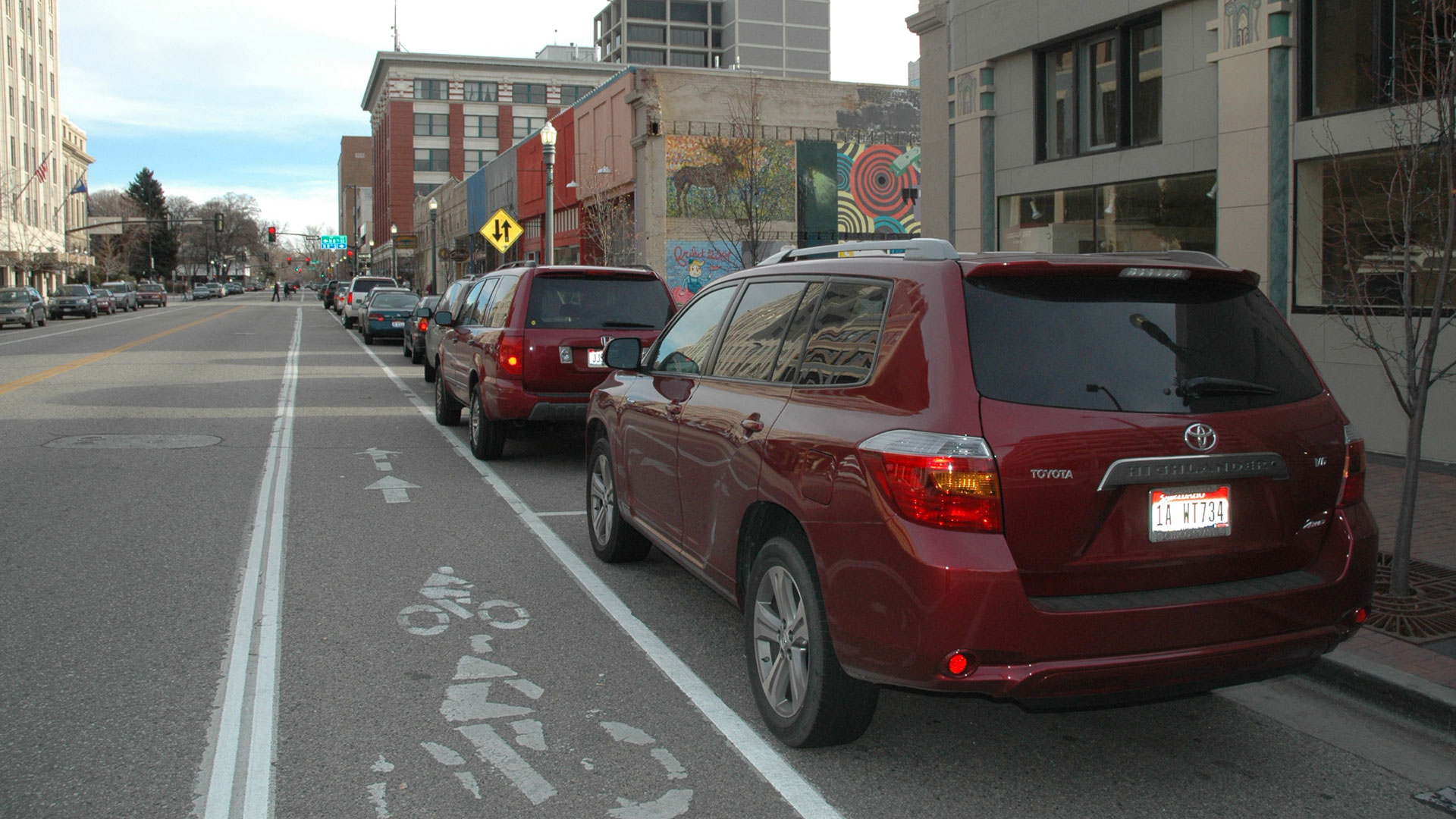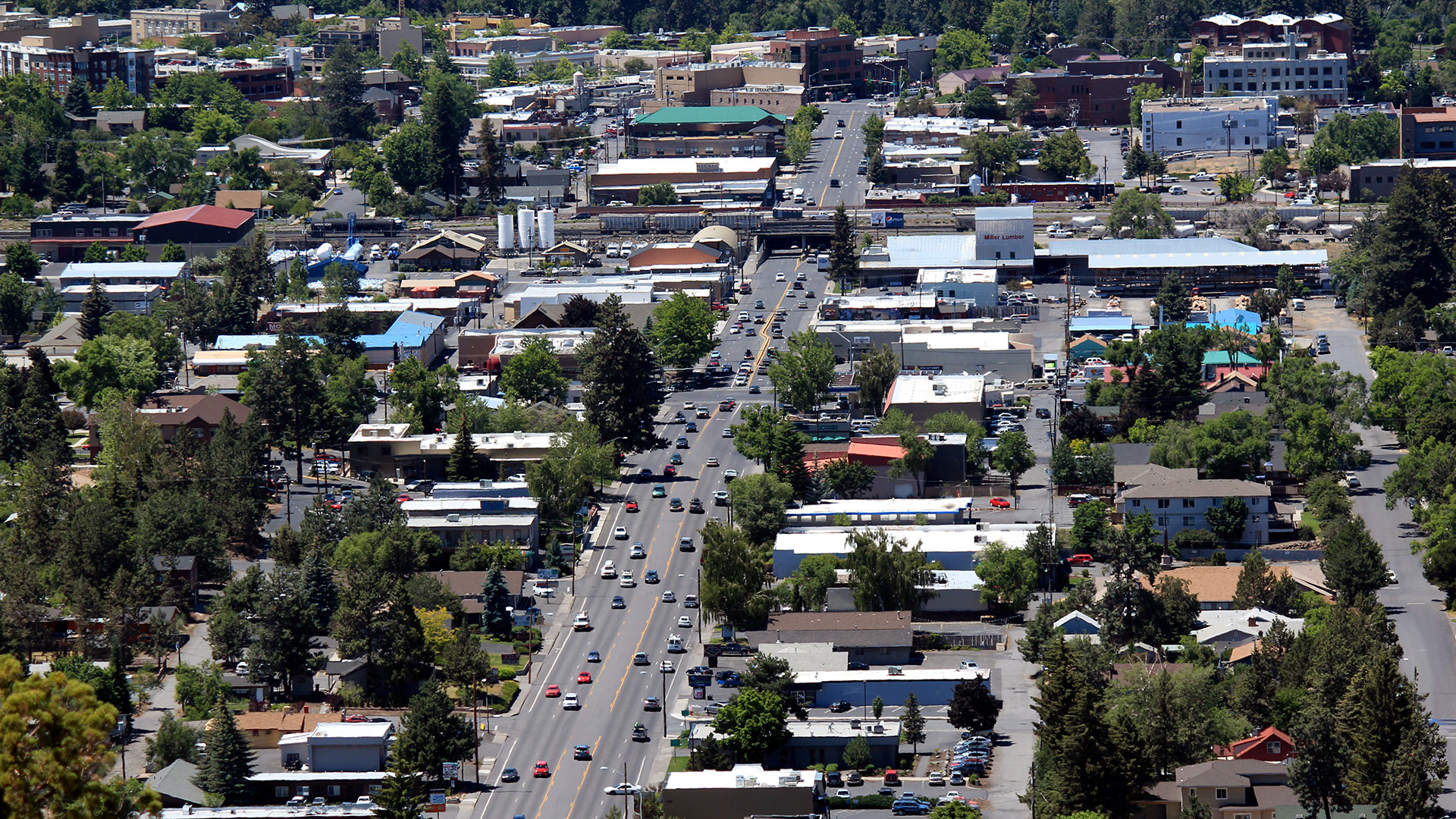August 29, 2024
One might assume that defining on-street parking is a standardized practice; however, the reality is outside of laws that define minimum parking distances from features like stop signs, signals, and crosswalks, and the Manual on Uniform Traffic Control Devices (which states markings must be white), individual cities and towns have freedom to decide how they want to handle the sizing and delineation of parallel parking spaces along a curb, including whether or not to mark the spaces at all.
Marking spaces keeps parking organized and consistent, and simplifies data collection; however, it requires maintenance, can sacrifice efficiency, and comes with the decision of how large to make each space. Leaving curbs unmarked allows drivers to fit themselves in based on the size of their car. Which is the way to go?
Here are a few details for local agencies to consider as they search for the best marking solution for their community.

Marking spaces keeps parking organized and consistent, and can streamline data collection and enforcement. However, it requires maintenance, can sacrifice efficiency, and comes with the decision of how large to make each space.
Reasons to Mark On-Street Parallel Parking Spaces
Painting lines on the street along the curb makes it clear to drivers where the available spaces are. Here are a few reasons why some cities choose to predefine parallel parking spaces through striping:
- Less reliance on human judgment. You’re not leaving the efficiency of your curbside parking up to individual drivers, who tend to not park the most efficiently. While an unmarked approach could theoretically allow for more cars to park if the cars are small and drivers are leaving minimal gaps on either side, the reality is most drivers don’t park with optimal precision.
- Data Collection. In a demarcated system, you can place sensors in each parking spot to collect occupancy data. There are still ways to collect data on unmarked spaces, such as video surveillance, but it is typically a less streamlined process.
- Enforcement. In denser areas, requiring payment for parking is a strategy to encourage higher turnover and efficient use of parking space, but it also comes with the need to enforce. Marked spots can be individually equipped with sensors that detect if a car has overstayed in the space.
- Flexibility. You can define curb uses differently at different points in the day. For example, one or two spots could be on-street parking spots in the morning, but a loading zone in the afternoon, leading to an overall more efficient use of curbside space based on the biggest needs at different points in time.
- Bicycle parking. Demarcating parking spaces allows you to provide dedicated bicycle parking spaces. Demarcating bicycle parking at the beginning and end of a block can create better visibility for people entering the intersection.
- Accessibility. When on-street parking is metered or designated via signs and/or pavement markings, accessible parking spaces must be provided, per R211.1 in the final rule on the Public Right-of-Way Accessibility Guidelines (PROWAG). This adds an extra step for agencies but is a benefit to drivers who need accessible parking.
Reasons Not to Mark On-Street Parallel Parking Spaces
At the same time, for a variety of valid reasons, some cities choose not to mark individual parking spaces along a curb. These reasons can include:
- Maintenance. Where spots are marked, the lines must be kept in good condition through regular restriping. In places with more severe weather, this can be needed as often as every one or two years, incurring significant time and cost.
- Sizing. If an agency decides to mark parking spaces, then they’ll need to decide on the length of their spaces, and this quickly becomes a complicated decision. 20 feet is generally considered the standard for a parallel parking space, but agencies can choose to provide larger or smaller spaces. The ITE Traffic Engineering Handbook, 7th Edition recommends a space length of 23 feet to accommodate larger trucks. Agencies can also mark non-parking space on one side of the spot to make it easier to pull in or out. However, the larger you make each size, the fewer cars you can fit along the block.
- Lack of clear need. If you’re going to mark parking spaces, you should be able to articulate why. Is it for data collection? Enforcement? Efficiency? If on-street parking is not paid, and you’re not concerned with collecting data, the decision to leave it unmarked could simply be because you don’t need marking—a common rationale in residential areas.
Understand Your Context
The best way to approach a decision about marking starts with understanding for whom you’re designing. Is your land use residential, commercial, or industrial? Do you have a good understanding of what kind of vehicles are typically parking there so that you can more confidently determine dimensions? Look at vehicle registration data to understand the mix of vehicles in your area. If you have the funds and time, also do some data collection on who’s using the spaces. For example, the District Department of Transportation (DDOT) collected vehicle lengths during a Taylor Swift concert at Nationals Stadium and found the most common length was 15 feet (even with a higher-than-usual concentration of limousines due to the event). Rural areas would likely have larger average vehicle lengths. There are higher percentages of pickup trucks in Wyoming (37.1%) and Montana (34.7%) compared to more urban states like Connecticut (10.3%) and New Jersey (7.9%).
In addition to your confidence regarding who’s using your spaces, consider the other pros and cons above in the context of your goals and constraints. For example, do you have the budget and equipment for maintenance? How would your process for enforcement and/or data collection look for each approach? What are your goals related to the provision of bike and scooter parking? What are your goals for the parking system overall?
Let’s look at an example of how one city handled this decision (and ended up with two different approaches): the popular outdoors destination of Bend, Oregon.
Case Study: City of Bend
The City of Bend has elected to mark parking spaces downtown and leave parking unmarked elsewhere in the city. Tobias Marx, Parking Manager at the City of Bend, says the primary drivers behind this decision were the enforcement benefits downtown and the challenges of maintenance overall.
The City of Bend experiences an average of more than 33 inches of snowfall a year, and the wear-and-tear on the streets from the snowplows means restriping needs to occur frequently. The burden of maintenance was enough to outweigh the potential benefits in most of the city, since most local roads in the city offer on-street parking but not in a paid capacity. Downtown, however, is a different story.
“We are applying the 80/20 rule,” says Tobias. “In Bend, 80 percent of the city just needs general parking rules, but not a managed system. The 20 percent we are primarily focused on is the managed parking district.”
Tobias says data collection is not the primary reason for demarcating spaces downtown, since the areas are already under 24/7 surveillance. Rather, it is enforcement, to ensure timely turnover so there is ample supply in an area that draws many people for shopping and dining. Sensors in each spot pick up activity happening in any parking space, including length of stay and violations, so enforcement officers can use their time efficiently by going directly to sites where parking violations have occurred.

The burden of maintenance was enough to outweigh the potential benefits of marking parallel parking spaces in most of the city, since most local roads in Bend offer on-street parking but not in a paid capacity. Downtown, however, is a different story. Image: Andy Melton, licensed under the Creative Commons Attribution-Share Alike 2.0 Generic license.
Tobias’ main advice for other cities is to know your parking ecosystem. Understand what your city needs before jumping to an approach used by someone else.
“It’s not particularly helpful to follow the advice or direction of another city without first asking for yourself, ‘Why? And what do we need?’ Break down the ‘parking rights’ in different areas of your city and then define those areas into ‘managed’ and ‘unmanaged,’ where each might require a different approach,” he says.
It’s interesting to note, however, that other cities have arrived at different outcomes. In fact, enforcement is the reason Washington, D.C. is moving away from demarcating spaces and toward multi-space meters. The parking payment app used in the District ran into challenges with the coordination about technological changes that made it more complicated to require payment at the space level rather than the zone level. Additionally, with Washington, D.C. being a large urban area, an approach taken in one part of the city would need to be replicated across the whole District, unlike Bend which is more distinctly separated into downtown and residential areas. This supports Tobias’ point that every city is different, and every approach should be too.
Continue the Conversation
When you dive into the details, something as seemingly straightforward as painting lines for parking spaces reveals itself to be a many-layered decision. We ourselves have had some lively internal email threads on this topic, playfully debating the pros and cons of marked and unmarked approaches, along with strategies for sizing spaces to balance efficiency with practicality and safety. We’d be glad to talk about it further! Reach out to any one of us to strike up a conversation about what factors you’re weighing in your city, and let’s talk about how your approach to parking can help you work toward broader safety and land use goals.
